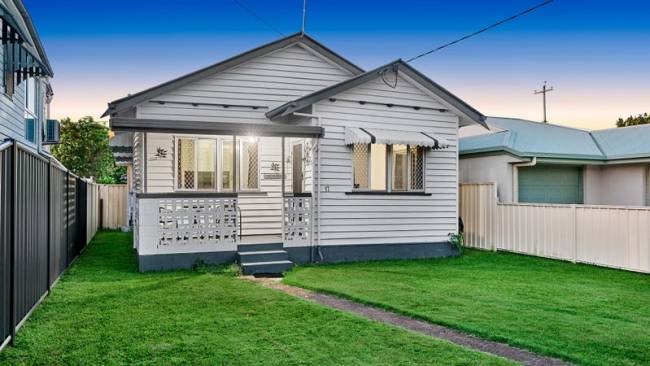‘Hanging by our fingernails’: Sydney suburbs where mortgage debt is eating up more than half homeowners’ pay
Homeowners in multiple areas are spending more than half their pay on mortgage repayments and would be in “dangerous territory” if interest rates climbed even slightly, analysis shows.
Property
Don't miss out on the headlines from Property. Followed categories will be added to My News.
A glut of Sydney households are living on a knife’s edge after overextending themselves to get into the booming property market.
Financial modelling has revealed there are multiple city suburbs where the typical homeowner is spending more than half their income on mortgage repayments – in some cases, years after buying.
Many of these homeowners would be pushed into “dangerous territory” if interest rates climbed even slightly from their current record lows, according to the Digital Finance Analytics study.
RELATED: How much average Aussie has in bank
Inside Karl Stefanovic’s new Sydney house
Fast food worker with 29 homes has brutal advice
It comes as property price data published this week showed Sydney’s median house value is on the brink of hitting an unprecedented $1.2 million after climbing 10 per cent over 2021.
Digital Finance Analytics principle Martin North said low rates and frantic price hikes have encouraged buyers to push themselves to the limit and incur “risky” levels of debt.
“It’s a ridiculous situation,” he said. “We are on the precipice, hanging by our fingernails and hoping like hell rates stay low but we are kidding ourselves about the risks.”

The most overstretched households tended to be concentrated in popular “lifestyle” suburbs – waterfront enclaves and inner city suburbs with large cafe precincts.
They included eastern suburbs Kensington, Coogee, Waverley, Bronte and South Coogee, along with inner west suburbs Glebe, Forest Lodge and Haberfield.
The average household in these areas reported they were paying 43-69 per cent of their gross income on loan repayments.
Other suburbs where households tended to be buried in debt were construction hubs such as Mascot, Edmondson Park and Homebush, where repayments were typically chewing up about 32-40 per cent of income.
Homeowners in the country’s priciest suburbs, including Bellevue Hill, Vaucluse, Double Bay and Dover Heights were spending even more – up to 88 per cent of their income on repayments.
But Mr North said many of these owners in wealthy areas were not struggling with their repayments as they had significant incomes.
It was the owners in the construction hubs who were much more exposed because the money they had left over after loan repayments was not as high, Mr North added.
“Much of this current boom has been from demand for houses, not units, if there is a correction in the apartment market, these (owners) would be in a lot of trouble,” he said.
Mortgage Choice broker James Algar said homebuyers were borrowing more than ever before when comparing loans to incomes.

“It’s not uncommon now for couples to spend about half of their earnings,” he said.
“Sometimes people need a reality check and they have to be reminded they still have to live off their remaining income.”
Mr Algar said homebuyers who grew up in desirable, lifestyle suburbs often struggled with the idea of purchasing in more affordable markets because they had strong links to the area.
“They will stretch themselves more to keep that lifestyle,” he said.
First homebuyers Alissa Odlum and Nicholas Poulture recently bought a home in the Aoyuan International development Woolooware Bay and said being close to the beach was “a non-negotiable”.
But because prices were rising so rapidly across Sydney they felt pressured to exceed their budget on the previous homes they saw. “Prices shot up in October and then insanity hit in January,” Ms Odlum said.

“We kept getting outbid and we were at our wits end until we found our apartment … we decided to be very strict with our budget and didn’t change it. We didn’t want to be unable to do any of the things we usually do and change our lifestyle.”
The data from Digital Finance Analytics showed homeowners in the Cronulla-Woolooware Bay area were usually spending about 40 per cent of their income on repayments.
Aoyuan International’s Matt Crews said the Sutherland Shire’s coastal suburbs were highly sought after because of the amenities and beach lifestyle on offer.



